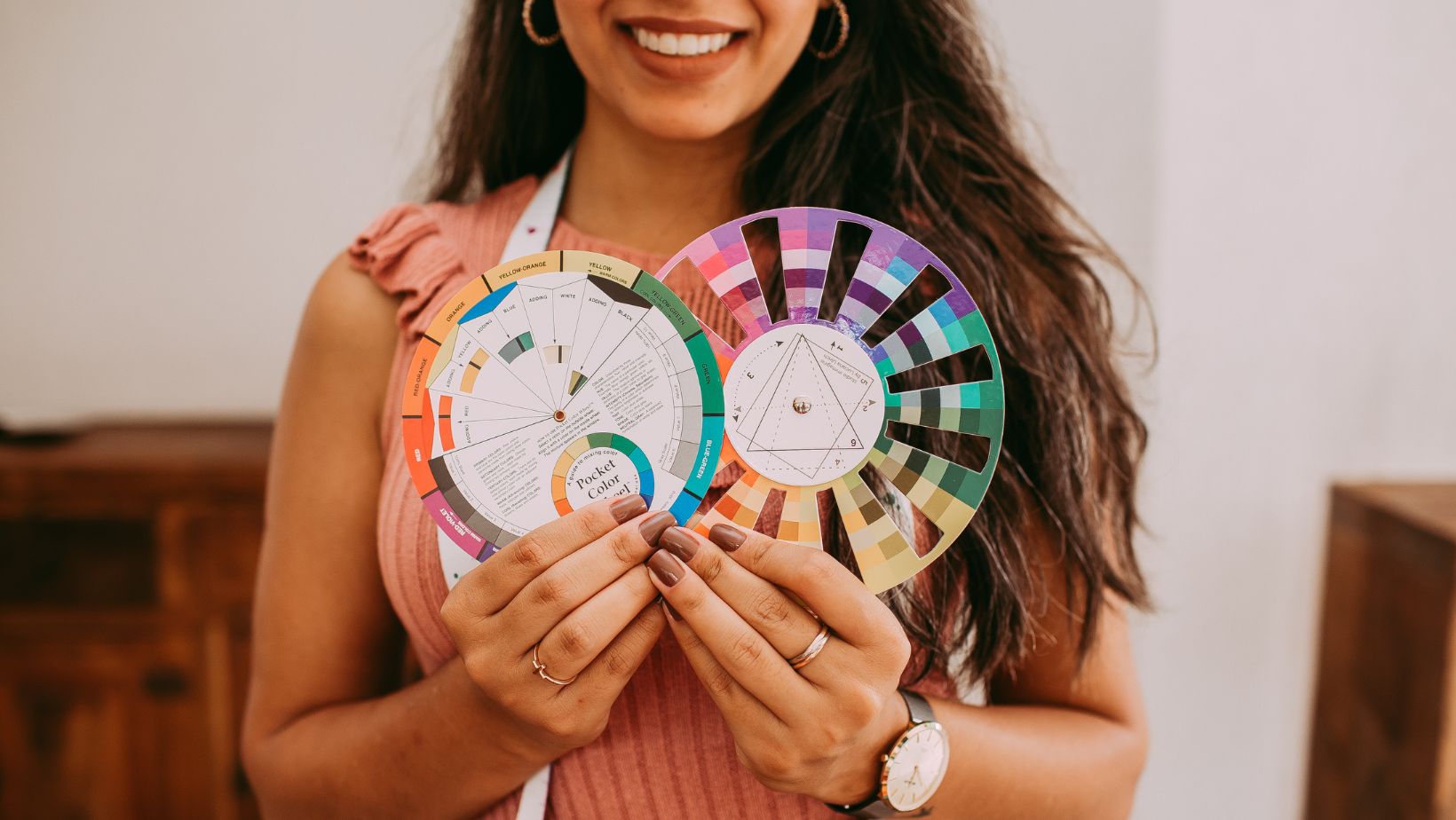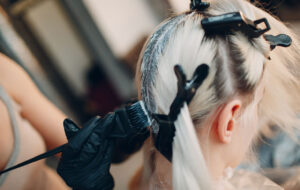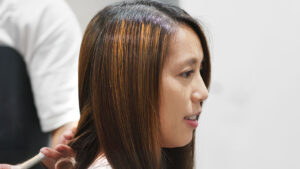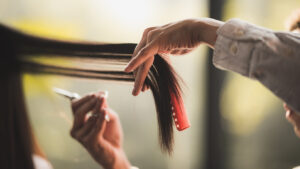We all learned our colors in kindergarten – many of us before that. Primary colors are yellow, red, and blue. When you mix yellow and red, you get orange. Blue and yellow make green. And to get purple, you combine red and blue. For many of us, that’s all there is to know.
Those who choose a career as a hairstylist, however, have a lot more to learn. In their professional training, they are taught to refer to a hair color wheel to determine which shades to blend for the best look, which colors neutralize each other to fix undesirable results, and which hues to avoid on certain skin tones. The hair color wheel serves as a convenient manual to ensure clients always leave the salon happy.
Read on to find out how the color wheel for hair works – and why you should run the other way if your stylist isn’t using it!
What is the Hair Color Wheel?
The hair color wheel is a tool used to teach the science of Color Theory. It’s composed of 12 colors, with cool shades such as purple, blue, and green on the left, and warm ones like orange, red, and yellow on the right. It also has tertiary (or blended) colors like red-orange and blue-green.
On the wheel, colors on the opposite side from each other cancel each other out. Violet, for example, is opposite of pale yellow. Blue-green is on the opposite side of orange. When opposite colors are blended, they cross-cancel or “neutralize” each other.
How Stylists Use the Color Wheel for Hair
When working with hair dye, stylists refer to the wheel to help clients choose a color that will complement their natural beauty. They also use it for correcting undesirable color.
Formulating Color
A skilled color specialist knows which side of the hair color wheel is best for each client. Warm hair colors are better for clients with warm skin tones, while those with cool skin tones look beautiful with cool hair colors. This prevents that washed-out, pale look and instead will result in a more flattering shade.
To create colors that bring out a client’s natural beauty, stylists are taught how to identify skin undertones. If someone’s veins look blue or purple, that means they have cool skin tones and should refer to the cool side of the color wheel. Brunettes with cool skin tones look great with dark chocolate brown or jet black with cool blue undertones. Cool-toned blondes look good with honey hues, while redheads with cool skin undertones can pull off auburn or cinnamon.
Those with veins that look more green have warm undertones. Brunettes with warm skin look great in chestnut or chocolate brown, which brings out golden skin undertones and softens facial features. Warm-toned blondes look good with buttery yellow highlights. And redheads with warm undertones look incredible in bold shades like burgundy and copper. Long story short, the hair color wheel helps stylists create beautiful colors that look great on their clients.
Color Correction
Unfortunately, not every stylist is trained to use the color wheel correctly. And sometimes, clients take it upon themselves to dye their hair at home. In either scenario, expert color specialists are able to use the color wheel to fix those undesirable results.
For example, when a brunette’s hair has too much “red” in it, it tends to look orange. Using the color wheel, we neutralize that orangey color by adding the color opposite of red on the color wheel – which is green. The result is a warm, more natural-looking brown.
When a blonde comes in with hair that’s brassy, it has too much yellow in it. We look across from yellow on the color wheel to find violet and apply a violet toner to neutralize the yellow. This eliminates the excessive warm undertones that cause brassiness.
Basically, any unwanted color can be corrected with Color Theory magic. Ashy hair results when too many cool tones such as blue, violet, or green are added without the right toner.
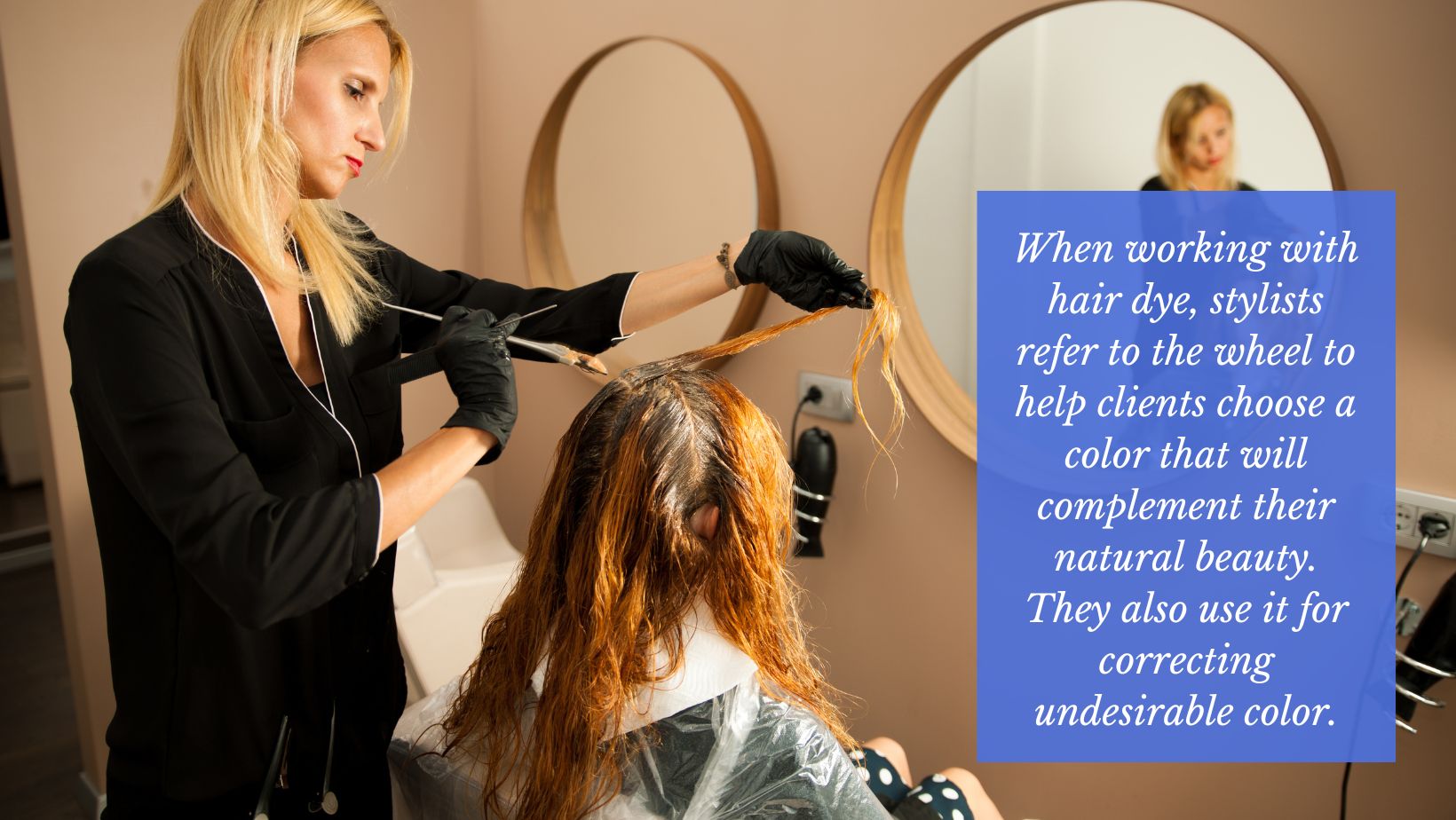
Choosing the Right Toner
Because there are so many shades of blondes, brunettes, and redheads, stylists must be sure exactly which colors on the color wheel will cancel out unwanted shades.
The most basic color correction looks like this:
- Adding purple or violet toner gets rid of yellow.
- Adding blue toner cancels out orange.
- Adding green gets rid of red.
- Adding red gets rid of green – a color that contributes to the “ashy” look.
But while those sound pretty simple, there are a lot of variations of hair colors, and therefore, specific colors of toner are needed. For instance, orange-yellow hair needs to be toned with blue-violet, but an untrained eye might identify the orange-yellow as orange. In that case, trying to fix brassy blonde with basic blue toner won’t work. Adding too much of a color on one side of the wheel and too little on the other side will also end badly.
This is why even when clients try color correction at home with purple or blue shampoos, they need to know which shade they’re trying to neutralize. In many cases, only a trained stylist can identify which colors on the color wheel will cross-cancel each other.
Does your Salon Really Understand the Color Wheel?
Although professional stylists should all have learned how to use the hair color wheel, not all of them refer to it regularly. And not all of them use it correctly. If you’re not sure about your stylist’s knowledge of the hair color wheel and color correction in general, look for these red flags:
They don’t discuss your skin tone.
During a detailed consultation, your stylist should ask what kind of expectations you have for your color service. When you suggest a certain shade, they should be honest with you and tell you whether that particular color will complement your skin color or conflict with your natural undertones. They will then recommend warmer or cooler shades that might be a better fit.
They don’t spread out color correction appointments.
If you’re looking for a drastic change, such as light to dark or dark to light, it shouldn’t be done in one salon visit. Color correction requires multiple steps, including lifting of the dark color, coloring and toning with the lighter color, then conditioning. Repairing bad hair color can also take months. A reputable stylist understands that applying a light color on top of a dark color in one sitting is extremely damaging, and will never agree to do it.
They treat all shades the same.
Every blonde, brunette, and redhead has different needs in the coloring process. Stylists should refer to the hair color wheel to determine which toners to use for the best results, whether it’s a honey blonde or a mocha brunette. Slapping the same color on three clients in a row won’t end well for any of them.
They don’t encourage you to work with your natural hair color.
You were born with your original hair color for a reason: That color is always a match for your natural skin undertones and eye color. Even when you want to switch things up with a brighter shade for summer, a warmer look for winter—or just want to cover grays—your stylist should help you choose colors that will bring out your natural beauty. It’s the best way to ensure you love the way you look and your hair stays healthy for years to come.
You don’t have to go to extra lengths to understand the color wheel for hair. That’s our job. If you’re ready to experience what our expert color specialists can do for you, schedule a consultation with Vakkar at (314) 648-3121, or book online by clicking here.
